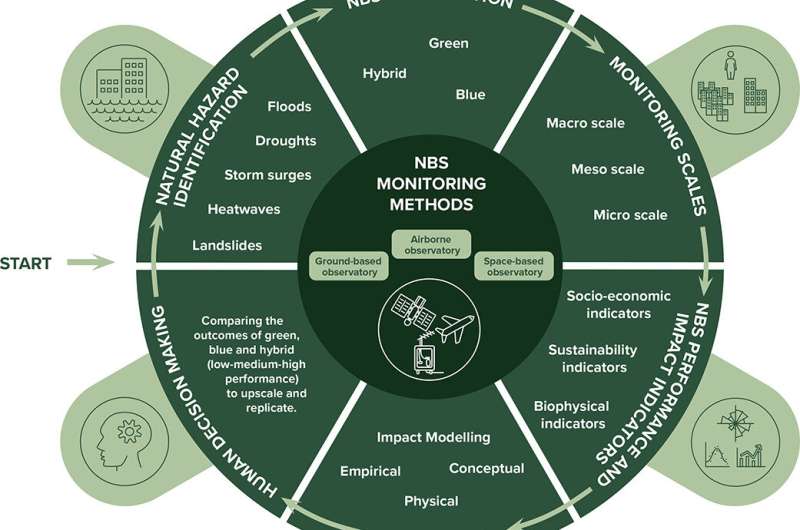Remote monitoring could boost the use of nature-based solutions to safeguard against natural hazards

Remote monitoring using airborne devices such as drones or satellites could revolutionize the effectiveness of nature-based solutions (NBS) that protect communities from devastating natural hazards such as floods, storms and landslides, say climate change experts from the University of Surrey.
Gray structural measures (a collective term for engineering projects that use concrete and steel) like floodgates, dams, dikes and sea walls are still the most common methods to guard against natural hazards. However, these 'gray measures' are expensive and lack the long-term flexibility and sustainability needed to help communities manage their growing population and address the planet's ongoing struggle against urbanization and climate change. While NBS are cost-effective, their usability and reproducibility are often hindered by the lack of standard monitoring methods, tools and indicators.
In a comprehensive study published in the Earth-Science Reviews journal, researchers from Surrey's Global Center for Clean Air Research (GCARE)collaborated with experts from across Europe to analyze monitoring methods that measure the effectiveness of NBS—such as wetlands, forest restoration projects and installation of green walls.
In the paper, the team found that while there is a need for combining ground and remote monitoring methods for holistic assessment, the advances in remote monitoring techniques present a significant source of hope for routinely, continually and accurately measuring the effectiveness of NBS and quelling skepticism around choosing NBS over gray-engineered options. Remote monitoring offers the ability to cover large geographical areas, and high-resolution imagery could change the way farmers, scientists, hazard managers and other decision-makers view NBS usage and replicability.
However, the study also warns that the lack of globally accepted standards to gage an NBS success hinders their progress and use and needs to be urgently addressed.
Professor Prashant Kumar, associate dean (International) and the director of the GCARE at the University of Surrey, said: "Unfortunately we do expect a significant uptick in natural hazards, thanks to climate change. Therefore, our decisions on how we protect ourselves are crucial, and nature-based solutions have the advantages of being flexible and not adding to the damage caused to our environment.
"I hope that this review begins an urgent discussion on how we can move forward as a scientific community and start to develop an accepted framework for measuring the effectiveness of nature-based solutions."
More information: Prashant Kumar et al. An overview of monitoring methods for assessing the performance of nature-based solutions against natural hazards, Earth-Science Reviews (2021). DOI: 10.1016/j.earscirev.2021.103603
Provided by University of Surrey



















